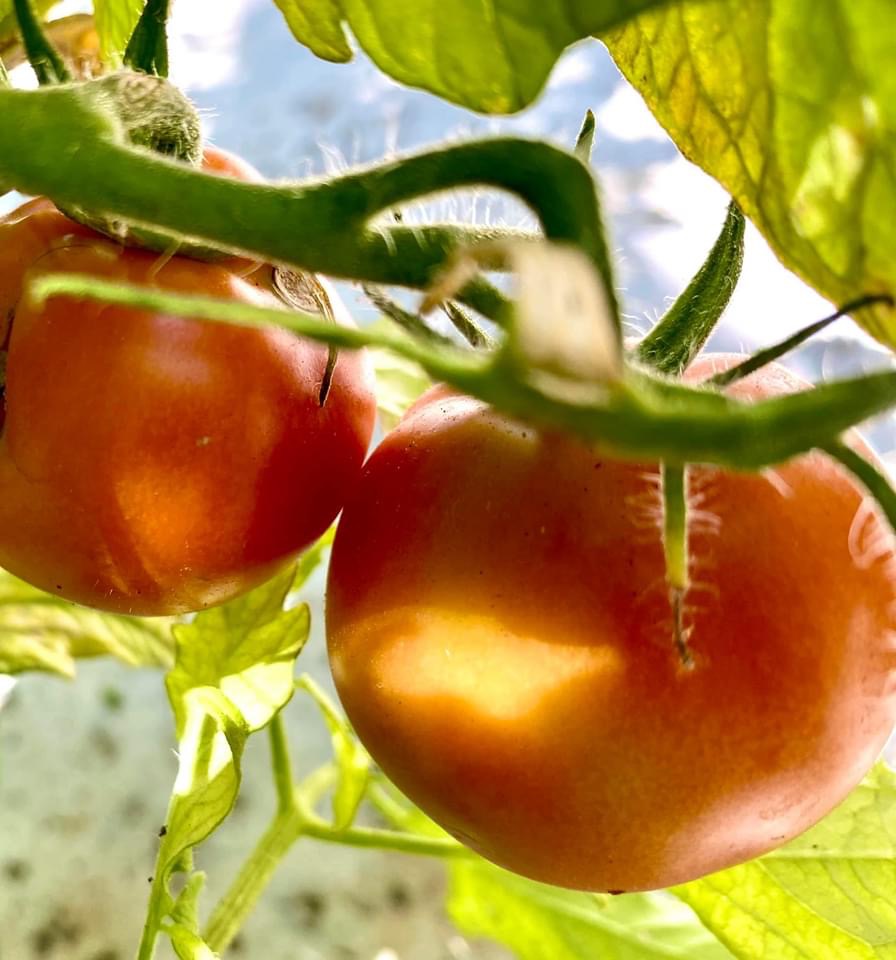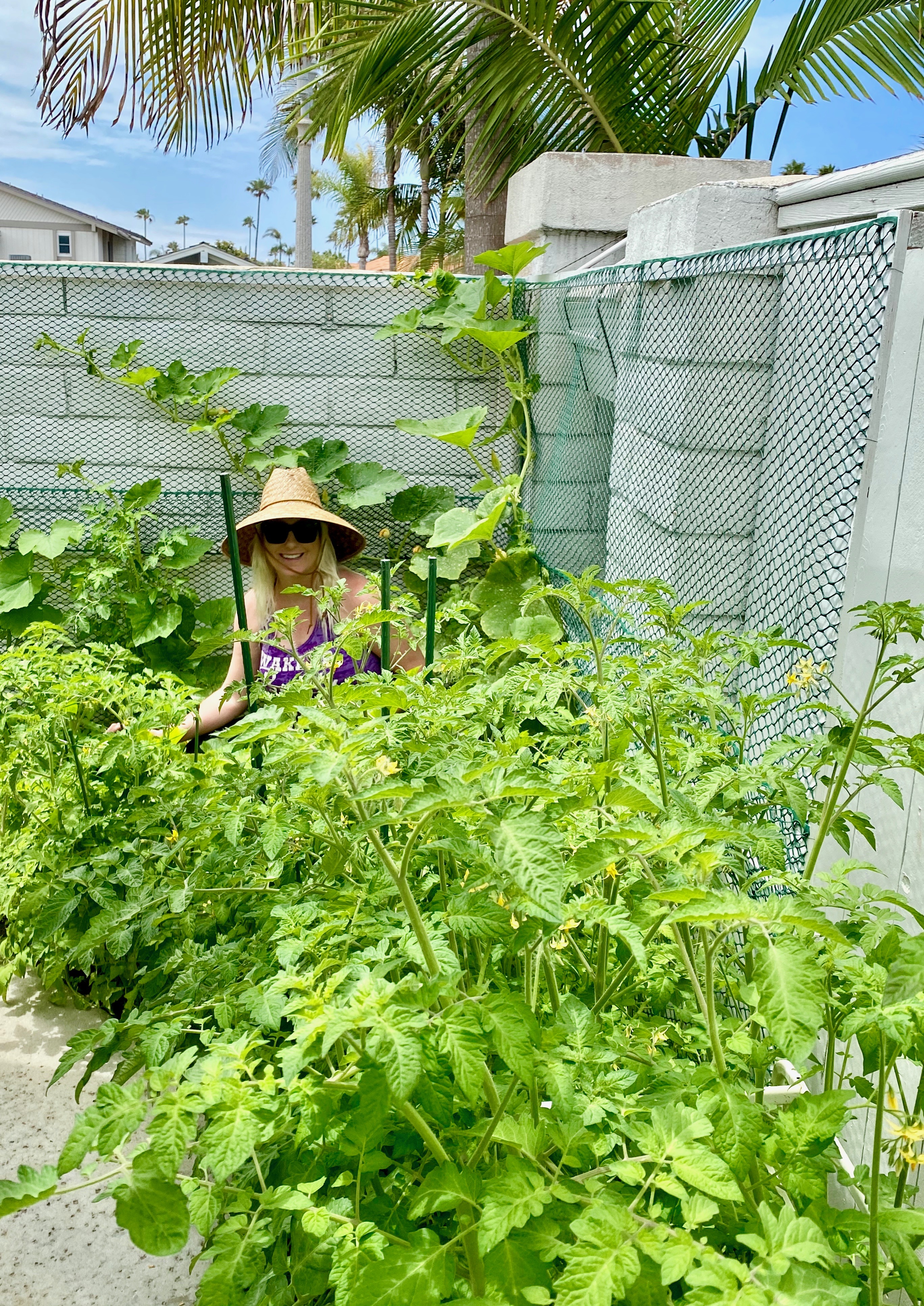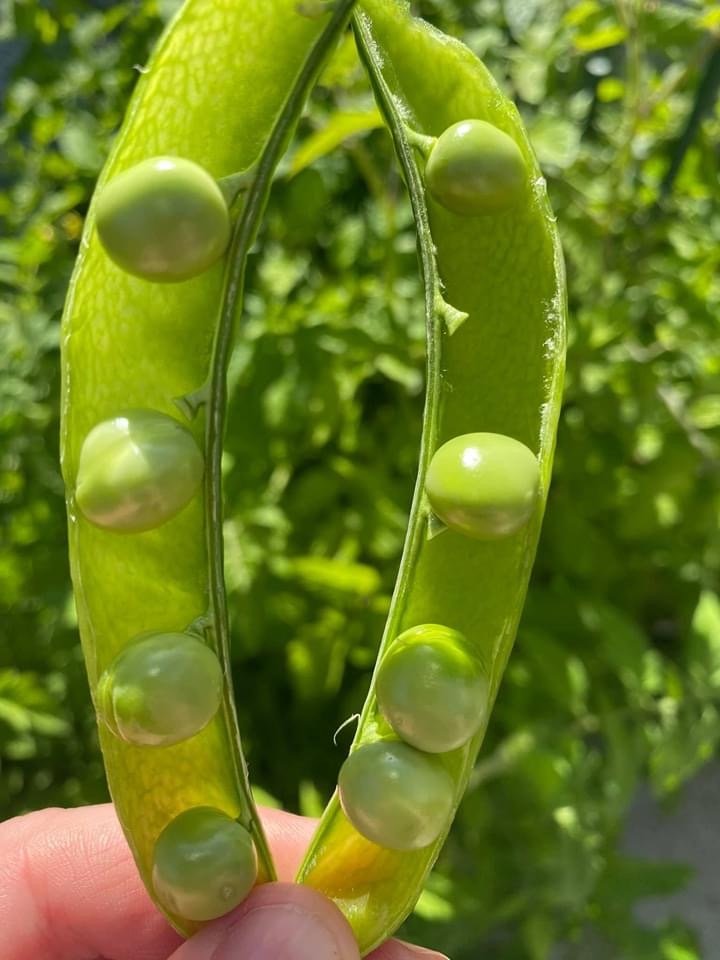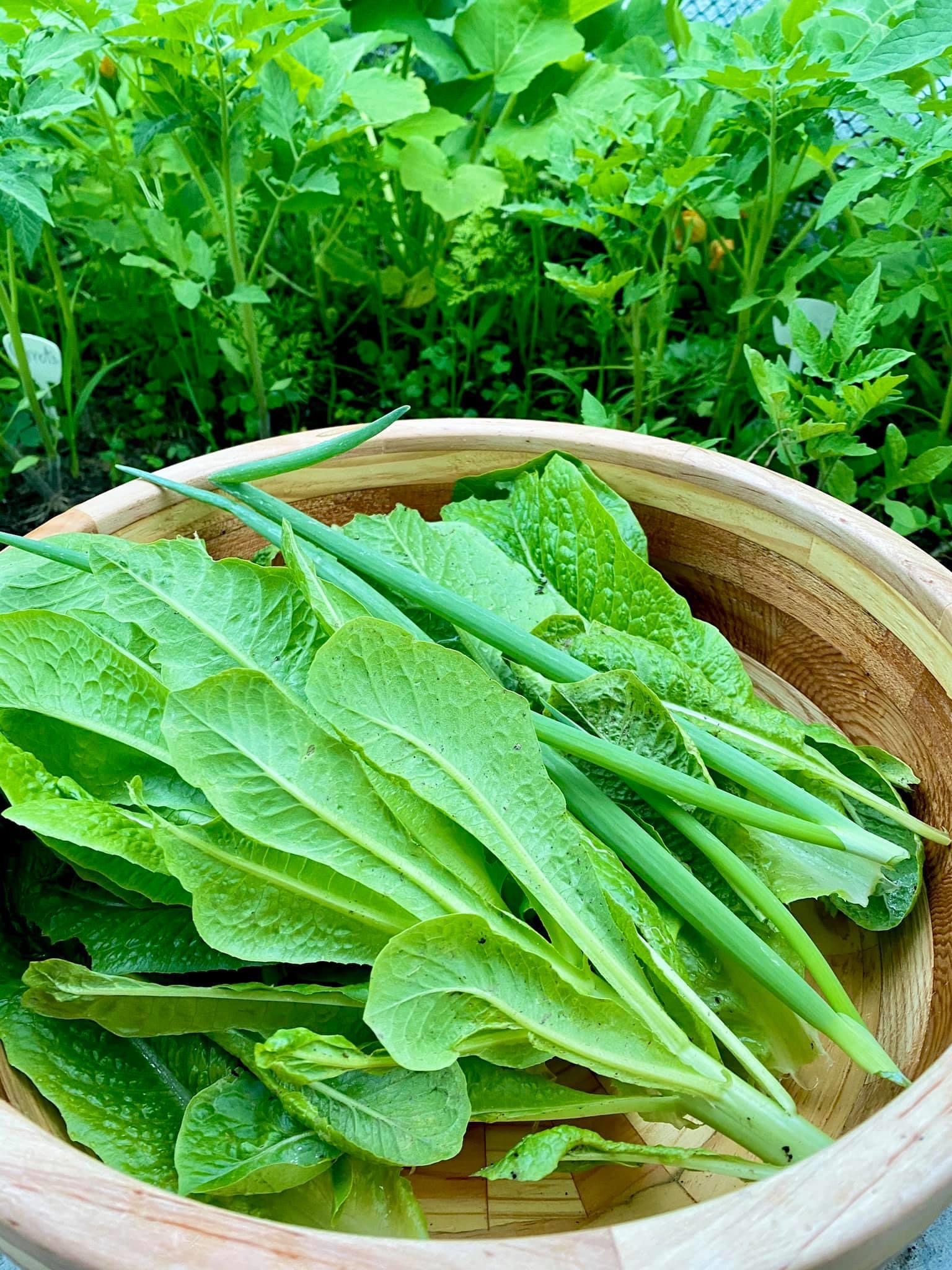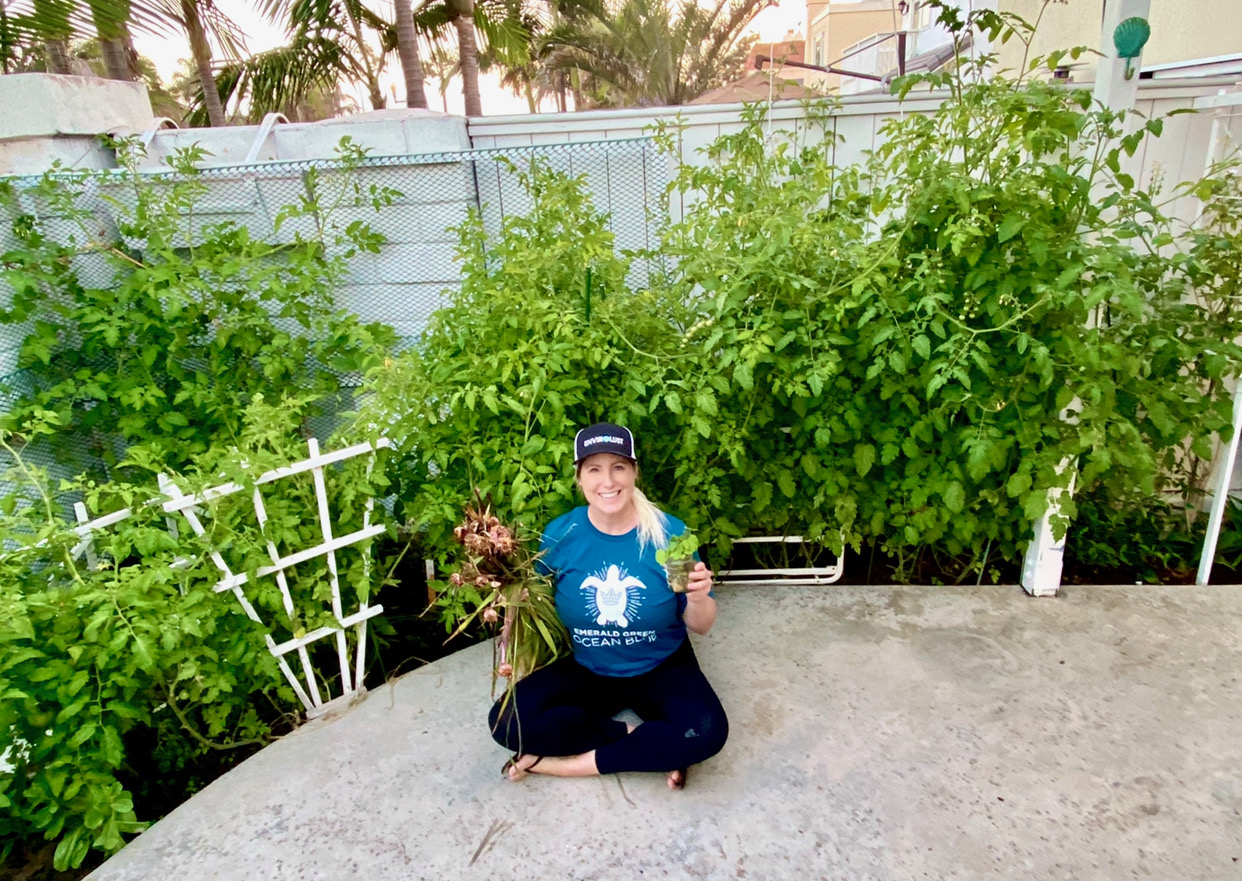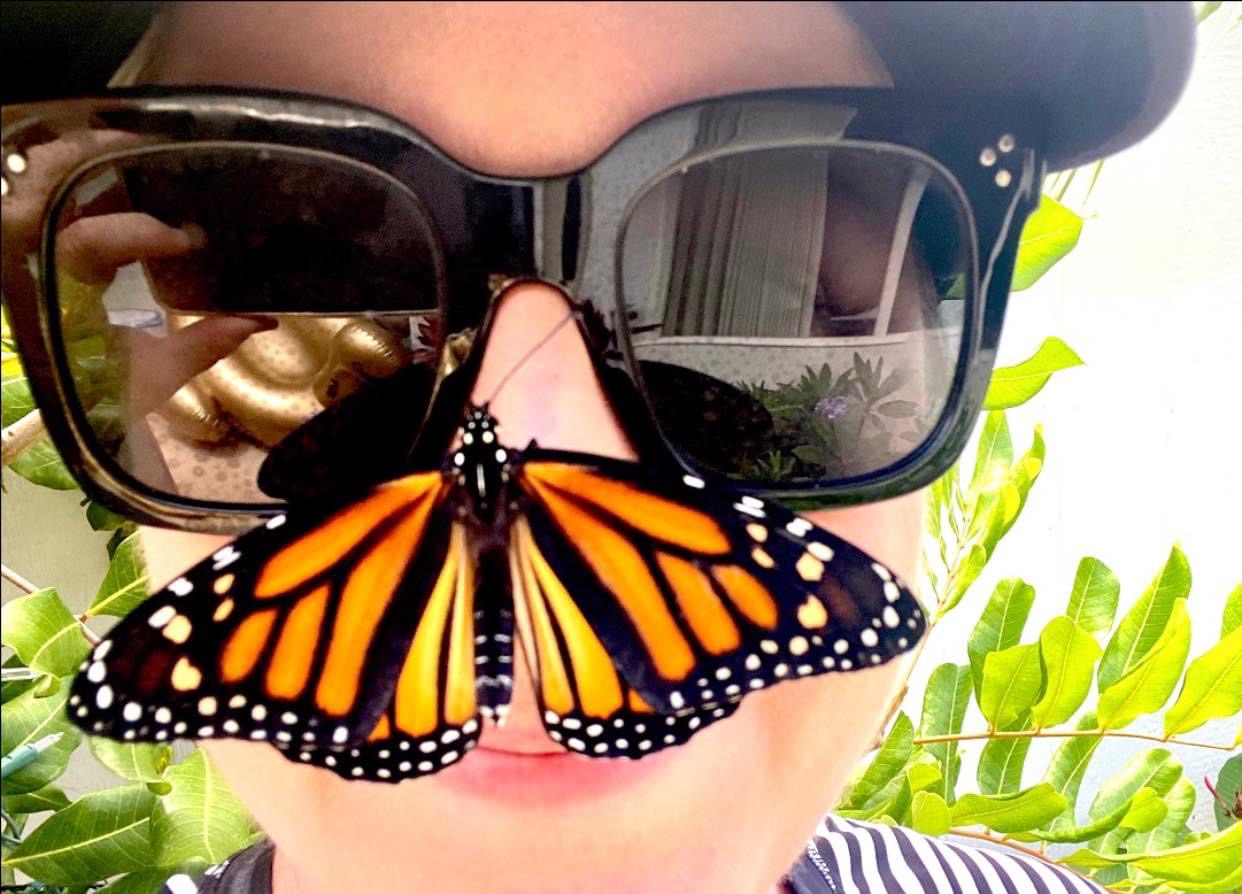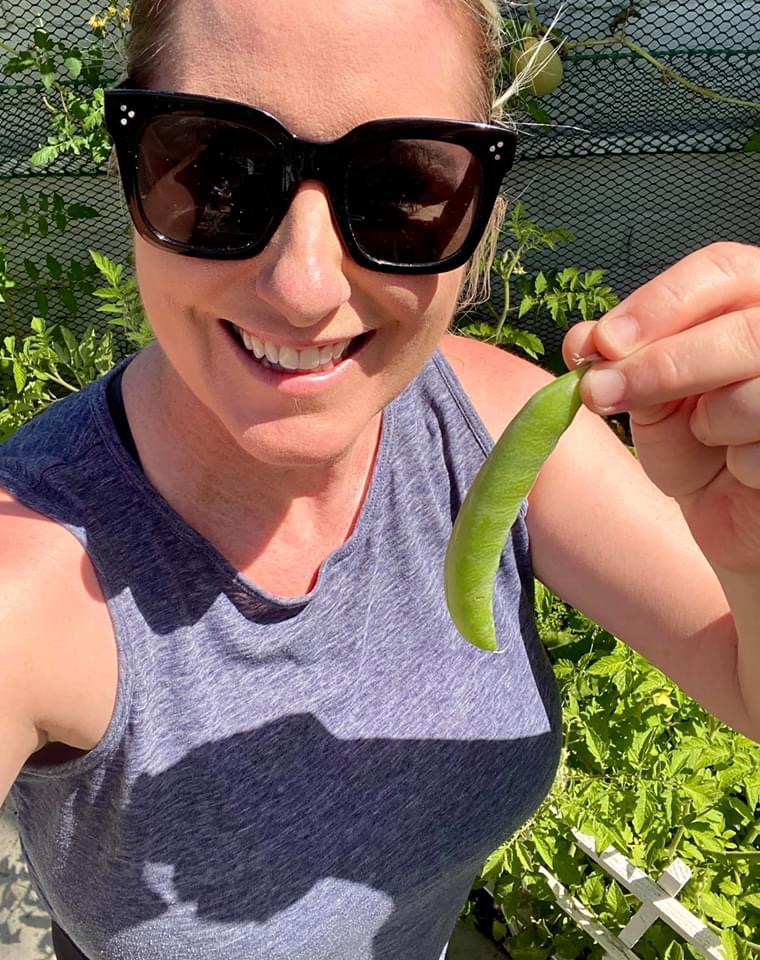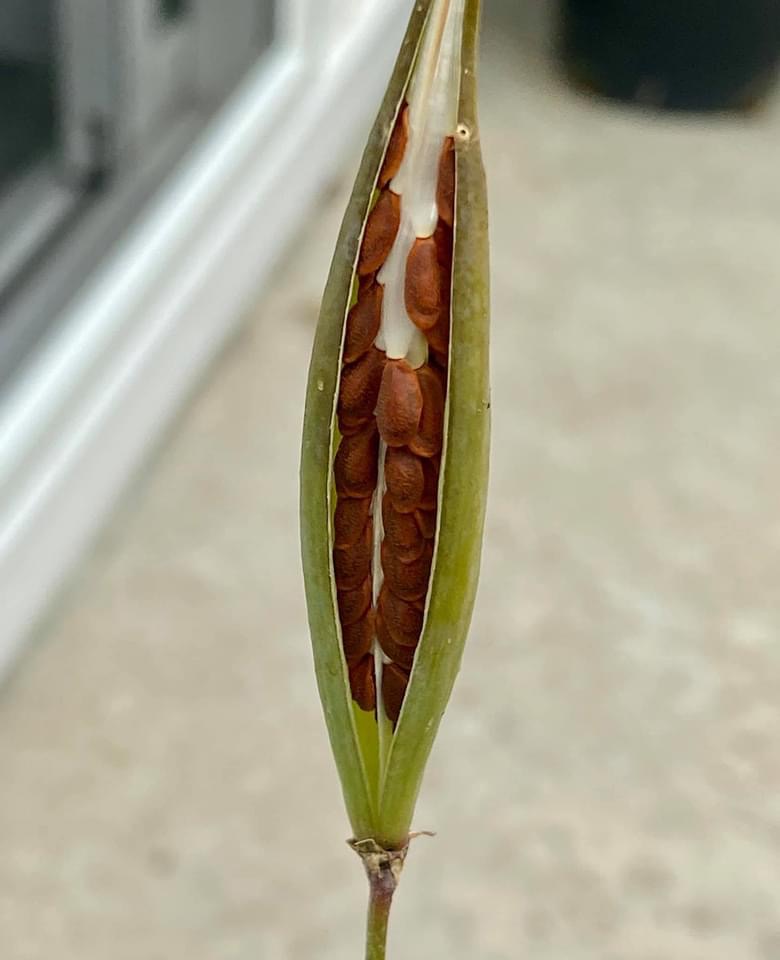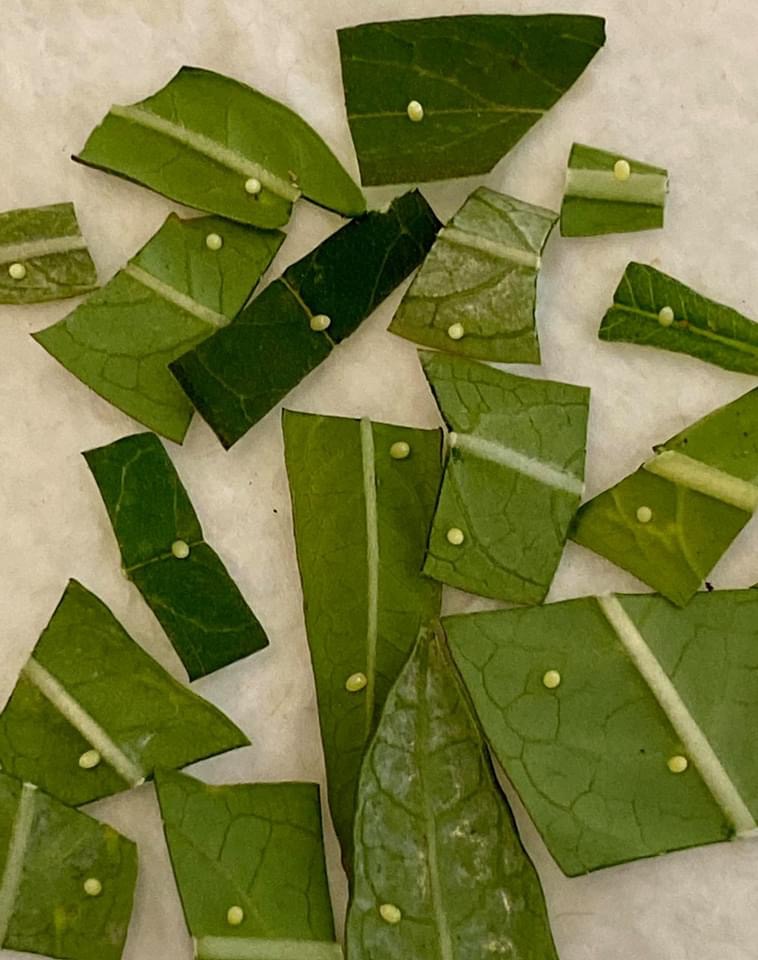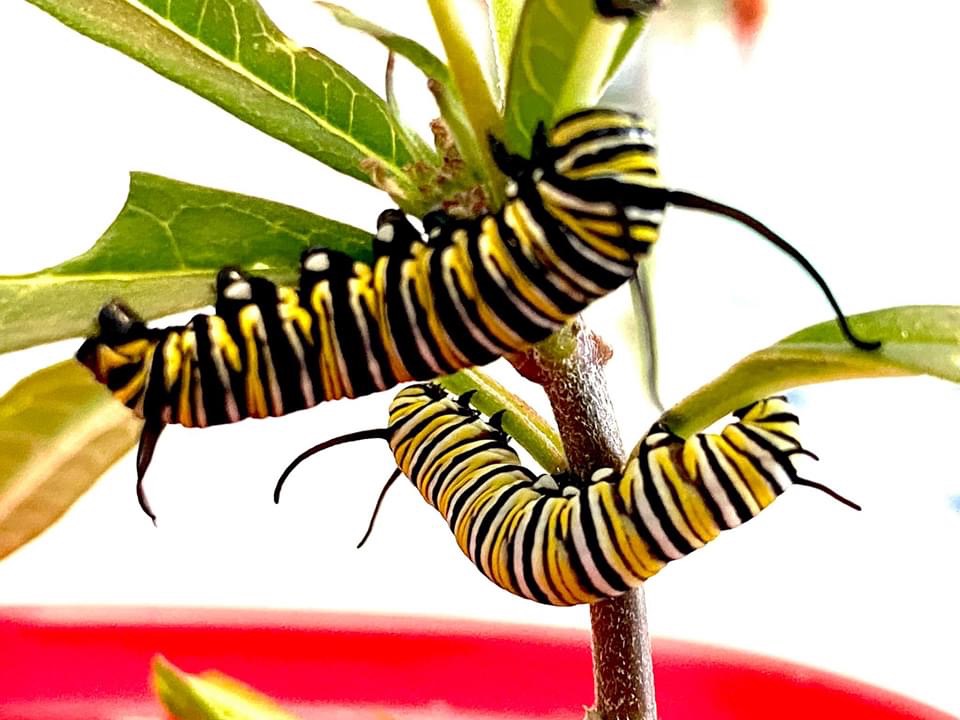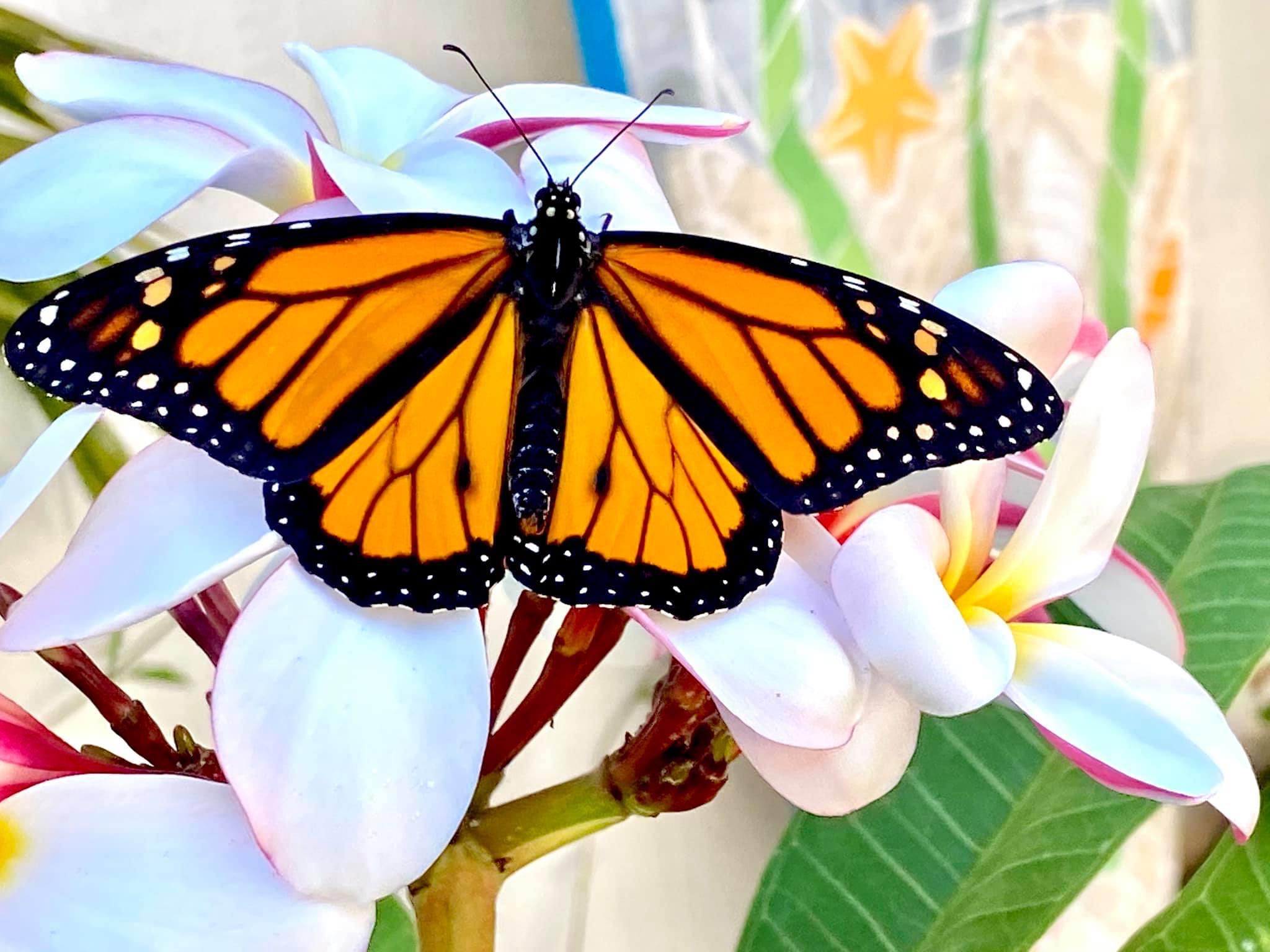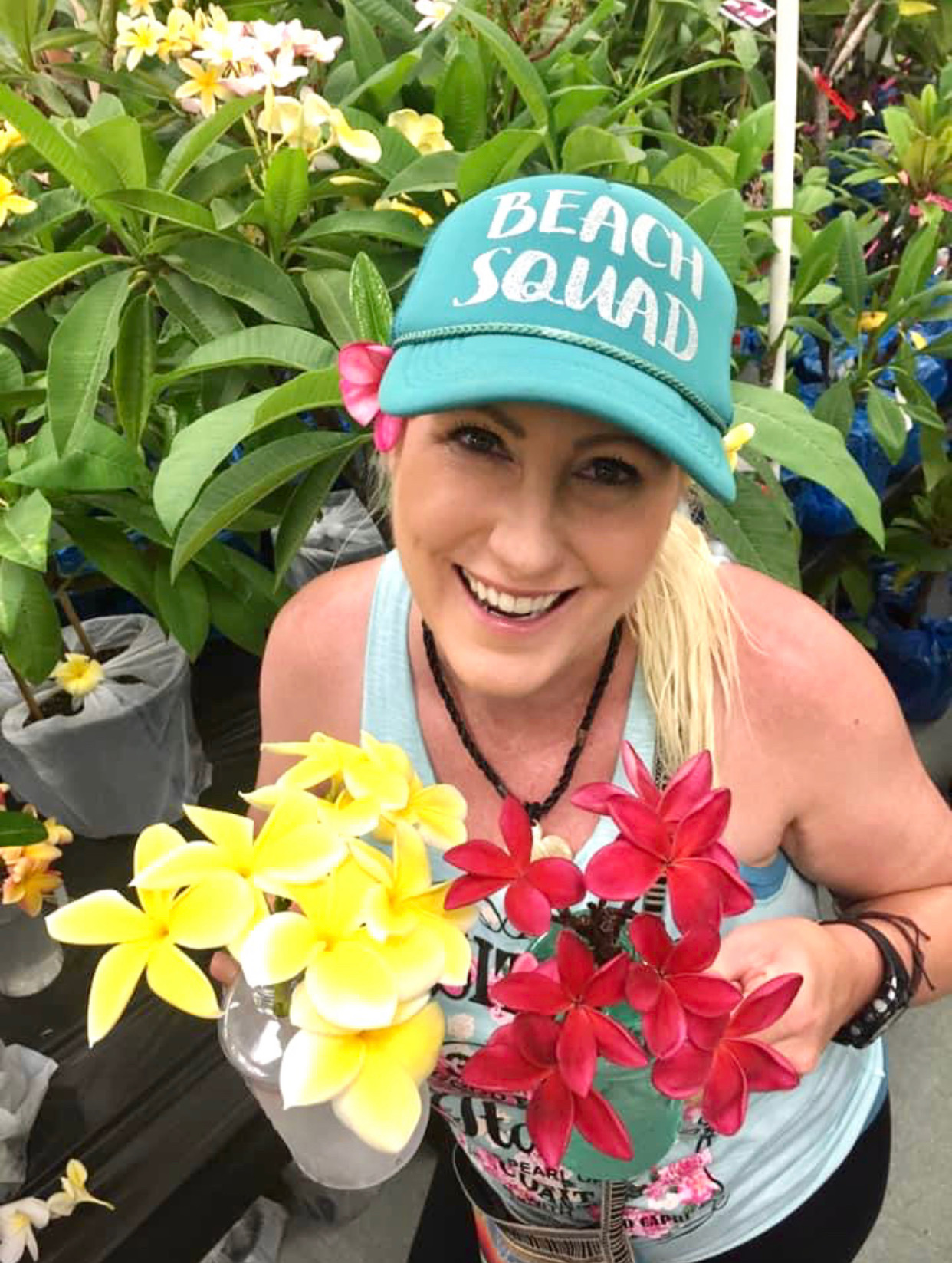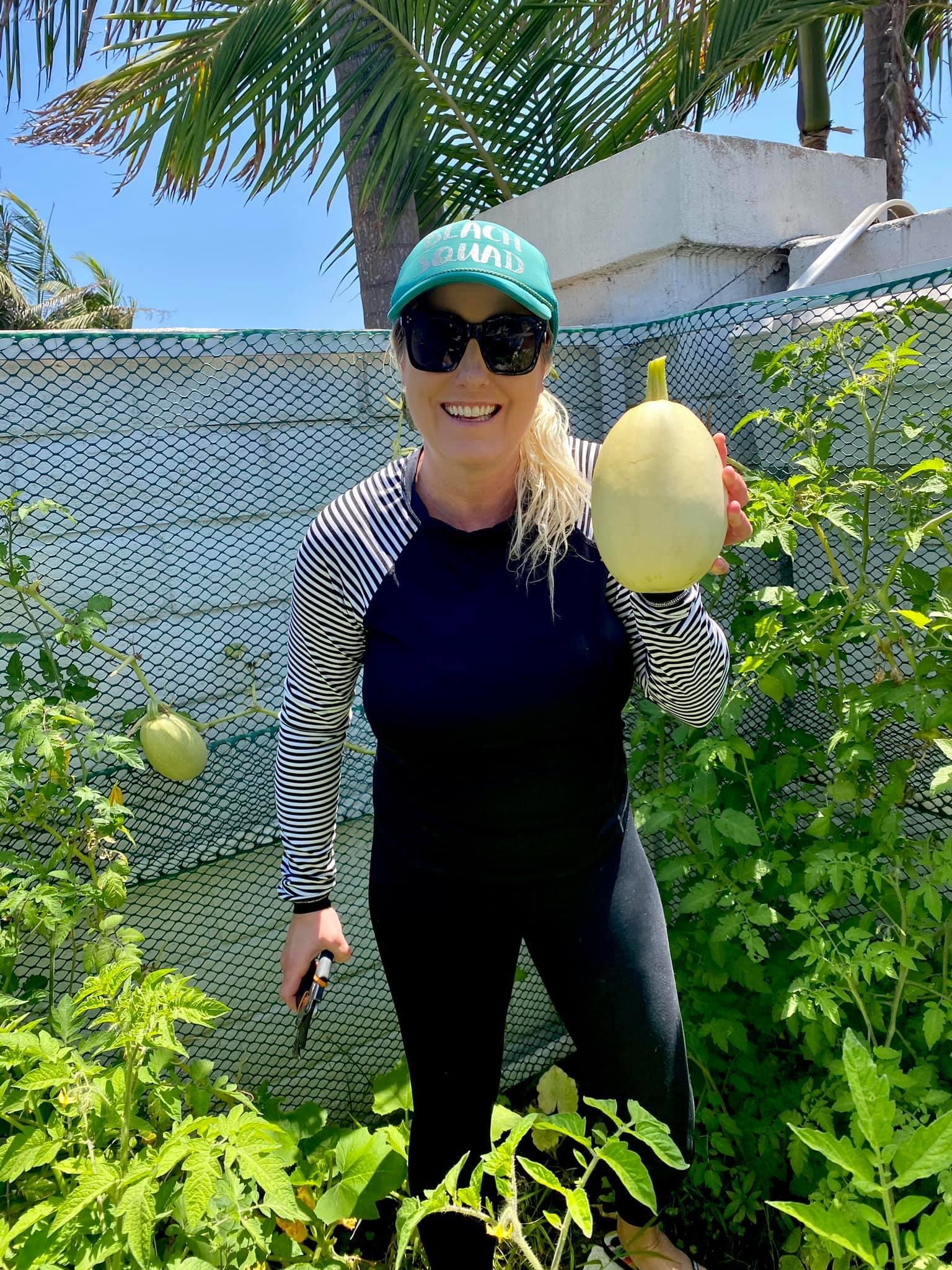What to do, what to do? Is the COVID quarantine leaving you with a little extra time on your hands? Are you feeling stuck at home? Are you looking for a healthy, outdoorsy family-style project, but not sure what to do? Are you interested in eating healthy, and saving money?
How about planting a home garden? Can you think of a more genius idea? I can’t.
I just had to learn more. Like, is planting a garden…hard? Especially for a newbie and a bona fide plant killer like me?
I caught up with Roberta Lenert, a local garden specialist, who—in addition to being a Robotics Coach at CMS and a marine bio and zoology whiz—has her own flourishing “Mermaid Organic Garden.”
We chatted about the “dos” and “don’ts” of planting your first garden. Check it out.
Q: It’s almost fall, can you believe it? What are some of the best fruits or vegetables to plant in the fall?
A: In San Diego we have the perfect climate to grow year-round! Fall is actually considered San Diego’s 2nd spring planting season. You can plant fall vegetables in late summer to harvest in the fall, depending on weather.
Some of the best fall crops include:
- Spinach
- Broccoli
- Kale
- Green Beans
- Brussel Sprouts
- Cauliflower
- Peas
- Celery
- Endive
- Asparagus
- Globe Artichoke
- Tomato (year-round in Coronado)
- Cabbage
- Swiss Chard
- Peppers
- Pumpkins
- Beets
- Turnips
- Lettuce—all types
Q: Where do you buy the seeds?
A: My favorite seed company is San Diego Seed Company. You can order online! I grow all of my vegetables and fruits from seed or scrap, and I make certain it is all organic and pesticide-free. San Diego Seed Company grows all organic heirloom seeds on an urban micro0-farm in San Diego. Buying local seeds is important to the heartiness of your crop. These seeds were produced in San Diego, which means that they are area specific to our environment, growing conditions, soil structure, and climate.
Q: How much space do you need?
A: In Coronado, we don’t have much space, but don’t let that deter you! You can make planter boxes, hanging wall gardens, tower gardens, rooftop gardens and in-ground gardens! Be creative and use your woodworking skills to create the perfect shape and space for your home. If you would prefer to buy premade planters, you can find them at Lowes, or online at Eartheasy.com, Gardeners.com or Wayfair.com.
Q: How do you know what to plant, where?
A: Remember the rhyme for alternating plants in your garden! “Beans, roots, greens, fruits.” Rotate your crops to maintain soil structure and increase nutrient levels.
You never want to plant the same plant in the same area two years in a row. In my raised garden bed, I tend to plant beans, peas, swiss chard, herbs, and artichokes. In the ground, I have tomatoes, squash, carrots, beets, radishes, rutabaga, tropical flowers, palm trees.
It’s good to be mindful of “Companion Planting”…some vegetables actually have a beneficial companion plant.
- Tomatoes can be planted with basil, carrots, celery, lettuce, spinach and parsley.
- Peppers can be planted with onions, spinach, basil and tomatoes.
- Green beans can be planted with corn. (Beans will use the cornstalks like a trellis and fix the nitrogen in the soil.)
- Squash can be planted by beans, peas, radishes, or marigolds.
In pots, I have milkweed (I grow this to raise Monarch butterflies), broccoli, smaller tomato varieties, peppers, bell peppers, basil, green onions, dill, cilantro, and parsley. I grow most of my herbs (parsley, dill and carrot tops) to attract Swallowtails to my garden. The Swallowtail caterpillars eat those plants.
Q: How do you prepare the land? Do you buy a certain type of soil?
A: In my garden I have plants in the ground, in pots, in a raised garden bed, and in hanging planters. I also start seeds and regrow scraps in my kitchen windowsill in jars of water.
In raised beds, I use 40% compost and 60% soil. For pots, you can buy potting soil sold in bags at a local garden store. In the ground, I add compost 3-4 weeks to the top of the soil before planting and use the layer method.
Q: What gardening tools will you need?
A: You don’t need much to start, and you can build up your garden tools as you go. To begin, invest in some good gardening gloves, hand trowel, pruning sheers, and organic seeds. You can make your own garden labels out of popsicle sticks, painted rocks, wine corks, old wood or anything you can come up with. Being creative in the garden makes it special!
Q: Anything special to know when it comes to watering?
A: Water (soak) your inground garden 3-4 times per week long enough for it to reach the roots. If you are watering pots, use about 2-3 cups of water. Check your soil often. Remember, as the temperature changes, so do your watering needs. The warmer the weather, the more water needed.
There are some things to watch out for to determine if you need to adjust your watering.
If you see dry soil, wilted brown leaves, and slowed growth, then you are under-watering.
If you see yellow, wilted leaves, browning edges or pests, you are overwatering. (Pests love damp places.)
Q: Speaking of pests, how do you prevent them?
A: To prevent pests…I use all- natural, organic methods!
One thing I do is raise praying mantises. You can order praying mantis egg case from NaturesGoodGuys.com or on Amazon. Two eggs are about $18.99 and will hatch 200-400 praying mantis. As soon as they hatch spread them all over your garden! They will take care of most of your aphids, spiders, crickets, grasshoppers, beetles and caterpillars. Praying mantis will also eat each other, so disperse them quickly. They live for about a year.
Be careful if you are raising Monarch and Swallowtail Butterflies to bring their eggs inside and raise them in a habitat to protect from praying mantis and T-Flies. Live ladybugs can be purchased from Natures Good Guys as well. They will eat aphids and small plant bugs.
Plant flowers to attract paper wasps. They are great to have in your garden and they will eat all the cabbage loopers, hornworms and army worms that attack your foliage! I have three resident wasps in my garden and they are keeping it looking lovely! Make sure you have a water station for them to drink. I use a bird bath with a small fountain pump for them to crawl up on if they accidentally go too deep.
Get a bird bath and bird stand in to attract local birds. They are a beautiful addition to your garden and they will pick off garden pests like caterpillars, insects and spiders.
If you are having trouble with mice or rats, get yourself a garden cat.
Q: Anything special you do between planting seasons?
A: Between planting seasons I always enrich my soil with compost from my backyard tumbling composter. Spread a thick layer of compost on top of the exposed soil. This will replenish nutrients, prevent weeds, and help soil retain moisture. I do not till my soil, as it destroys soil structure. Instead, I let nature do its things. Worms, rain, watering and microorganisms will break down organic matter, producing carbon dioxide and heat, thus producing a richer soil that promotes plant growth and health!
We compost all of our fruit and veggie scraps, shredded paper, toilet paper rolls, dead flowers and leaves, and grass cuttings (we get those from the gardeners). We try to not waste anything!
This replenishes micronutrients in the soil and give your fall plants a strong, healthy start!
Q: Do you have any other planting tips to prevent beginner mistakes?
A: Yes!
- READ SEED PACKETS AND PLANT LABELS so you don’t over crowd your plants! Make sure you space out your seeds according to their recommendations. Overcrowding your seeds can hinder root growth, increase development of disease, and deplete your plants of essential nutrients needed to grow successfully.
- ADD COMPOST & NUTRIENTS about 3-4 weeks prior to planting to replenish soil.
- WATER PROPERLY! Always water in the morning so plants have time to dry before nighttime. Many beginners like to sprinkle their soil or leaves from above, and often throughout the day. In reality, you want to give a good long soak to your garden 2-3 times a week, from below the leaves to make certain you prevent disease and the water reaches the roots. Most plants, like tomatoes, cucumbers and squash do not like to get their leaves wet. It causes disease and powdery mildew.
- HARVEST OFTEN! Many crops will only produce maximum yield if they are harvested often, like tomatoes, peppers and beans. Harvesting these encourages more production.
- USE SUCCESSION PLANTING to continue to have produce month after month!
Q: Any other tips?
A: Definitely remember use succession planting in order to harvest more from your garden. This also allows for multiple harvests. If you plant all of your seeds at the same time, you will likely get a huge harvest with too much food to eat all at once. Essentially, if you want to plant a few rows, wait a few weeks and then plant a few more rows. Your harvests will be spaced out and you will enjoy a long maximum yield from your garden!
Q: I hear you raise Monarch butterflies. Can you tell us more about this?
A: I have tons of tropical and native milkweed plants to attract the beautiful Monarch Butterflies, as we are on their migratory path. As soon as I see a Monarch laying her eggs on the bottom of a milkweed leaf, I snip the leaf off and place it in my indoor enclosure. (I raise the Monarch Cats in an enclosure because nature can be rough. Tachinid Flies will attack monarchs and lay its eggs inside the caterpillar. This never ends well. ) Plus, I get to watch the amazing stages of metamorphosis from egg to Monarch Butterfly.
Here are the Monarch Stages:
- Egg (will hatch in 3 days)
- Larva (caterpillar): Monarchs go through 5 Instars (time between molting) before they make their chrysalis!
- Pupa (Crysalis) 2 weeks
- Eclose… A Monarch is born! They will hatch with crumpled wings, and that is ok! Let them be. They will pump their wings and strengthen them to get ready to fly. This may take 1-4 hours. Once they are strong, it is time to release them for their first flight in Coronado!
Q: If you’re looking at gardening as a family activity, what are some good gardening tasks for kids?
A: Gardening with kids is good for the soul! Gardening can improve confidence, fine motor skills, bug recognition, butterfly metamorphosis and the importance of patience. Start small so they don’t get overwhelmed and can feel a sense of accomplishment!
Here are some ideas:
- Garden Journal! Take pictures, draw and document everything from their point of view! You will be surprised at how much it changes over the weeks and months.
- Start small: Make a fairy garden.
- Let them get dirty! It feels good to have your hands in the soil and to dig. Teach them how to make holes for seeds with a stick or chopstick. Have a dirt path where they can just play and create!
- Have them drop in the seeds and label what you planted and where! This can be really fun to make the labels together! I love the idea of painting rocks with pictures of what the vegetable or fruit will look like at harvest, color code popsicle sticks, create vegetables out of clay, or even make wood signs to label together as a family.
- Get them their own gardening tools so they can feel included. Skip the kids tools, as they can break easily. Get a sturdy gardening set like Fiskar or Tacklife, so they don’t get frustrated with broken tools in the garden.
- Compost: Have them be in charge of adding the food scraps and paper items to the composter. They will feel included and accomplished when they can add their very own soil to the garden!
- Let them raise and release the garden protectors and pollinators. Have them check on them and document their growth in their garden journal.
- Raise Monarchs! They can watch the entire life cycle in about 30 days, document it daily and release their very own Monarch Butterflies! They will be helping the Monarch population, creating new pollinators and making Coronado beautiful!
Q: How long have you been gardening for?
A: I have been gardening for years, but it wasn’t until Covid-19 that I had enough time to really do my research and dive in headfirst! My ultimate goal is to be able to open my back door and hand pick 80% of my meal. I also am supplying seeds and starts to friends and Coronado locals who would like to start their own gardens.
I have always had a tropical plant garden with a few veggies thrown in here and there. I am usually always on the go adventuring, so I would plant what was easy and not very time consuming. Now that I am staying home and have all the time in the world, I decided to do as mush research as possible to grow the best vegetable and fruit garden I could.
I have grown lemons, oranges, passion fruit, strawberries, tomatoes, peas, beans, squash, zucchini, onions, cucumbers, Rutabaga, Asparagus, carrots, Swiss Chard, broccoli, cauliflower, kale, Romaine lettuce, Basil, Mint, Dill, Rosemary, Cilantro, Red Potatoes, Sweet Potatoes, Spaghetti Squash, artichokes, eggplant, Brussel sprouts, lavender, crookneck squash, beets, blueberries, Bell Peppers, Jalapenos, peas, beans, ginger, plumeria, hibiscus, and milkweed!
Q: One of your favorite plants to raise?
A: Plumeria. We raise plumeria from seeds year-round. It takes 3 years from planting a seed to the plant maturing enough to bloom. Each seed pod takes nine months to mature.
Plumeria do amazing in Coronado. They have leaves and blooms from May to November and lose their leaves and are dormant for the remainder of the year. We have over 40 Plumeria plants and enjoy the smell and beauty of Hawaii in our garden!
My favorite varieties are:
- Aztec Gold
- Carmen
- Kauka Wilder
- Kaneohe Sunburst
- Somoan Fluff
- Penang Peach
- Celadine
Q: Do you think gardening is a challenge, or is it easy? And what are some of the benefits of gardening?
A: Gardening takes time and it is a bunch of hits and misses, but it is oh-so-rewarding! Gardening can reduce stress, give you a sense of purpose (I run out to my garden every morning to see what has grown or ripened), boost immunity (with Vitamin D and all the veggies that you will be eating!), help combat loneliness (Plants thrive when you talk to them) and increase your overall happiness!
Well, there you have it! What do you think? Do any of you garden yourselves, or has this article inspired you to dig in? I know I’m excited to give it a go. I promise to keep you posted!
Thanks Roberta for the amazing and helpful tips! Happy gardening!
